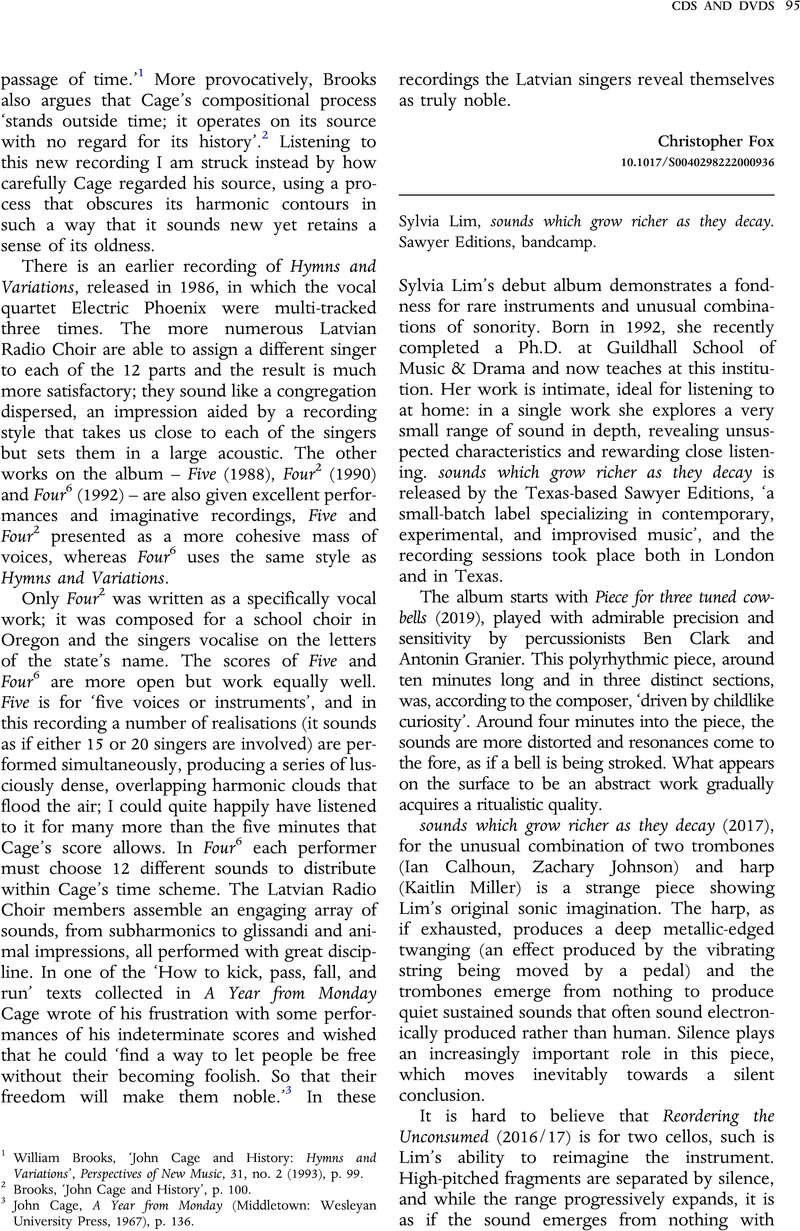No CrossRef data available.
Sylvia Lim - Sylvia Lim, sounds which grow richer as they decay. Sawyer Editions, bandcamp.
Review products
Sylvia Lim, sounds which grow richer as they decay. Sawyer Editions, bandcamp.
Published online by Cambridge University Press: 11 January 2023
Abstract
An abstract is not available for this content so a preview has been provided. Please use the Get access link above for information on how to access this content.

- Type
- CDs AND DVDs
- Information
- Copyright
- Copyright © The Author(s), 2023. Published by Cambridge University Press



